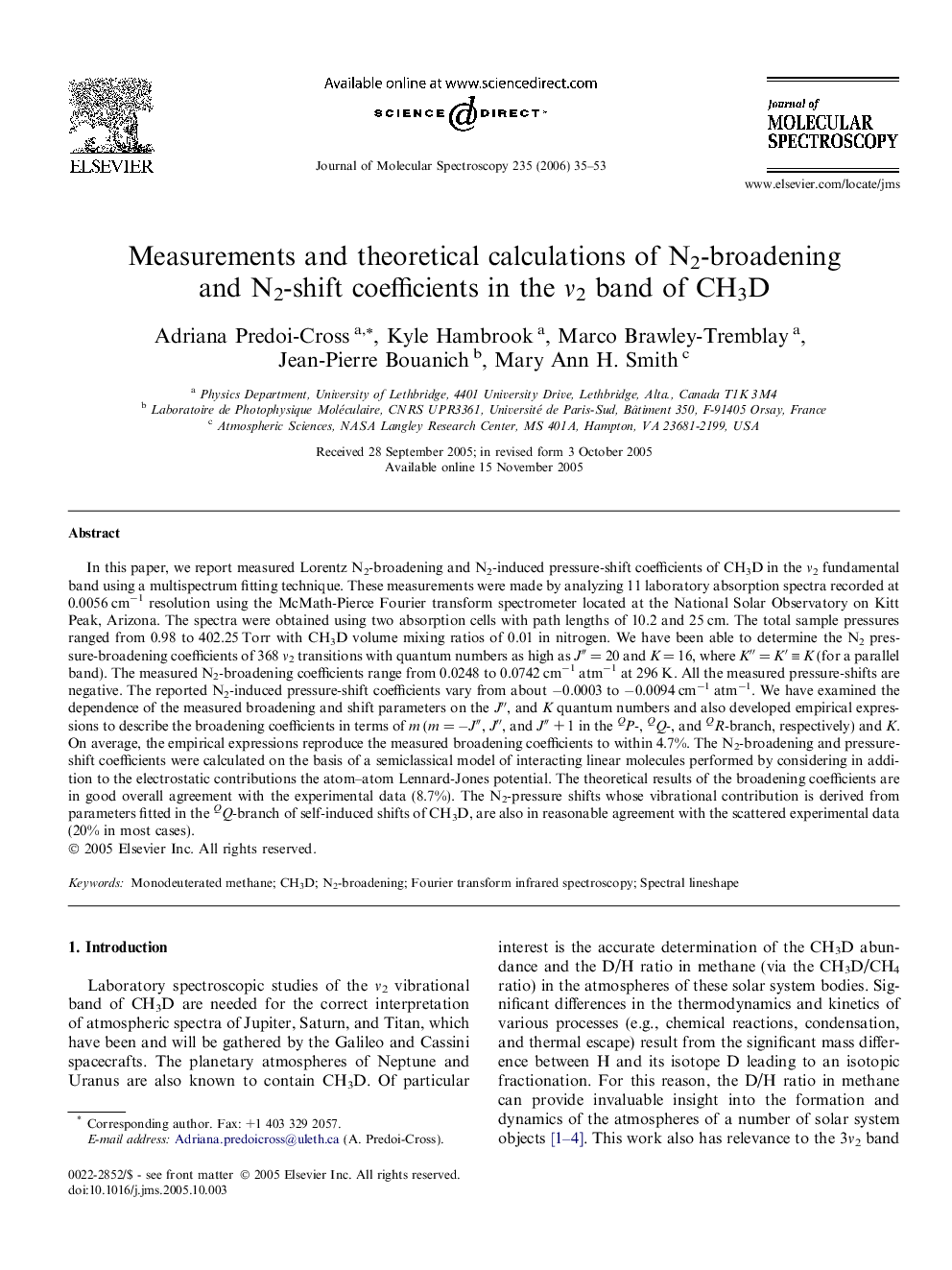| Article ID | Journal | Published Year | Pages | File Type |
|---|---|---|---|---|
| 5416231 | Journal of Molecular Spectroscopy | 2006 | 19 Pages |
Abstract
In this paper, we report measured Lorentz N2-broadening and N2-induced pressure-shift coefficients of CH3D in the ν2 fundamental band using a multispectrum fitting technique. These measurements were made by analyzing 11 laboratory absorption spectra recorded at 0.0056 cmâ1 resolution using the McMath-Pierce Fourier transform spectrometer located at the National Solar Observatory on Kitt Peak, Arizona. The spectra were obtained using two absorption cells with path lengths of 10.2 and 25 cm. The total sample pressures ranged from 0.98 to 402.25 Torr with CH3D volume mixing ratios of 0.01 in nitrogen. We have been able to determine the N2 pressure-broadening coefficients of 368 ν2 transitions with quantum numbers as high as Jâ³Â = 20 and K = 16, where Kâ³Â = Kâ²Â â¡Â K (for a parallel band). The measured N2-broadening coefficients range from 0.0248 to 0.0742 cmâ1 atmâ1 at 296 K. All the measured pressure-shifts are negative. The reported N2-induced pressure-shift coefficients vary from about â0.0003 to â0.0094 cmâ1 atmâ1. We have examined the dependence of the measured broadening and shift parameters on the Jâ³, and K quantum numbers and also developed empirical expressions to describe the broadening coefficients in terms of m (m = âJâ³, Jâ³, and Jâ³Â + 1 in the QP-, QQ-, and QR-branch, respectively) and K. On average, the empirical expressions reproduce the measured broadening coefficients to within 4.7%. The N2-broadening and pressure-shift coefficients were calculated on the basis of a semiclassical model of interacting linear molecules performed by considering in addition to the electrostatic contributions the atom-atom Lennard-Jones potential. The theoretical results of the broadening coefficients are in good overall agreement with the experimental data (8.7%). The N2-pressure shifts whose vibrational contribution is derived from parameters fitted in the QQ-branch of self-induced shifts of CH3D, are also in reasonable agreement with the scattered experimental data (20% in most cases).
Keywords
Related Topics
Physical Sciences and Engineering
Chemistry
Physical and Theoretical Chemistry
Authors
Adriana Predoi-Cross, Kyle Hambrook, Marco Brawley-Tremblay, Jean-Pierre Bouanich, Mary Ann H. Smith,
